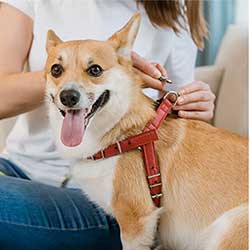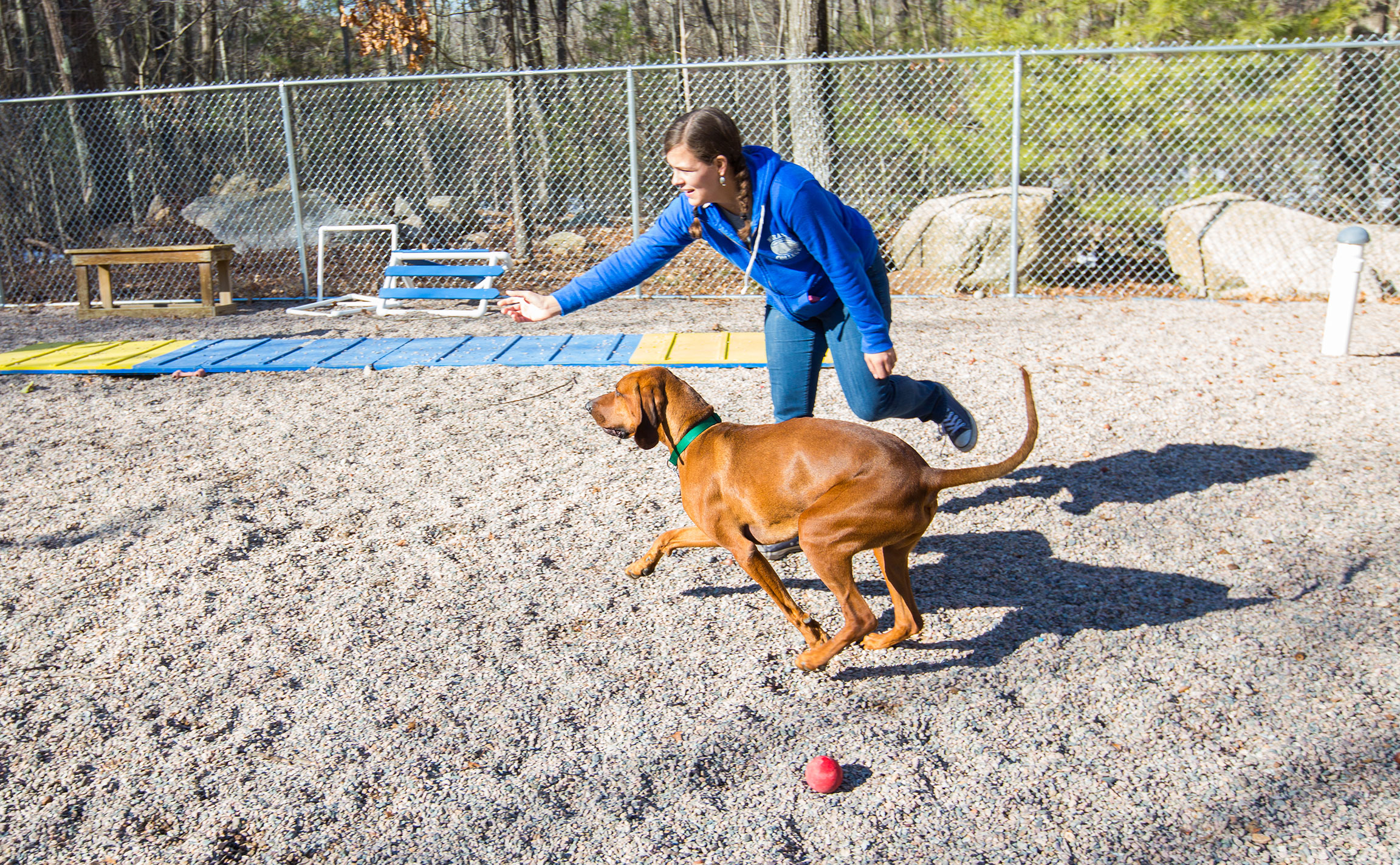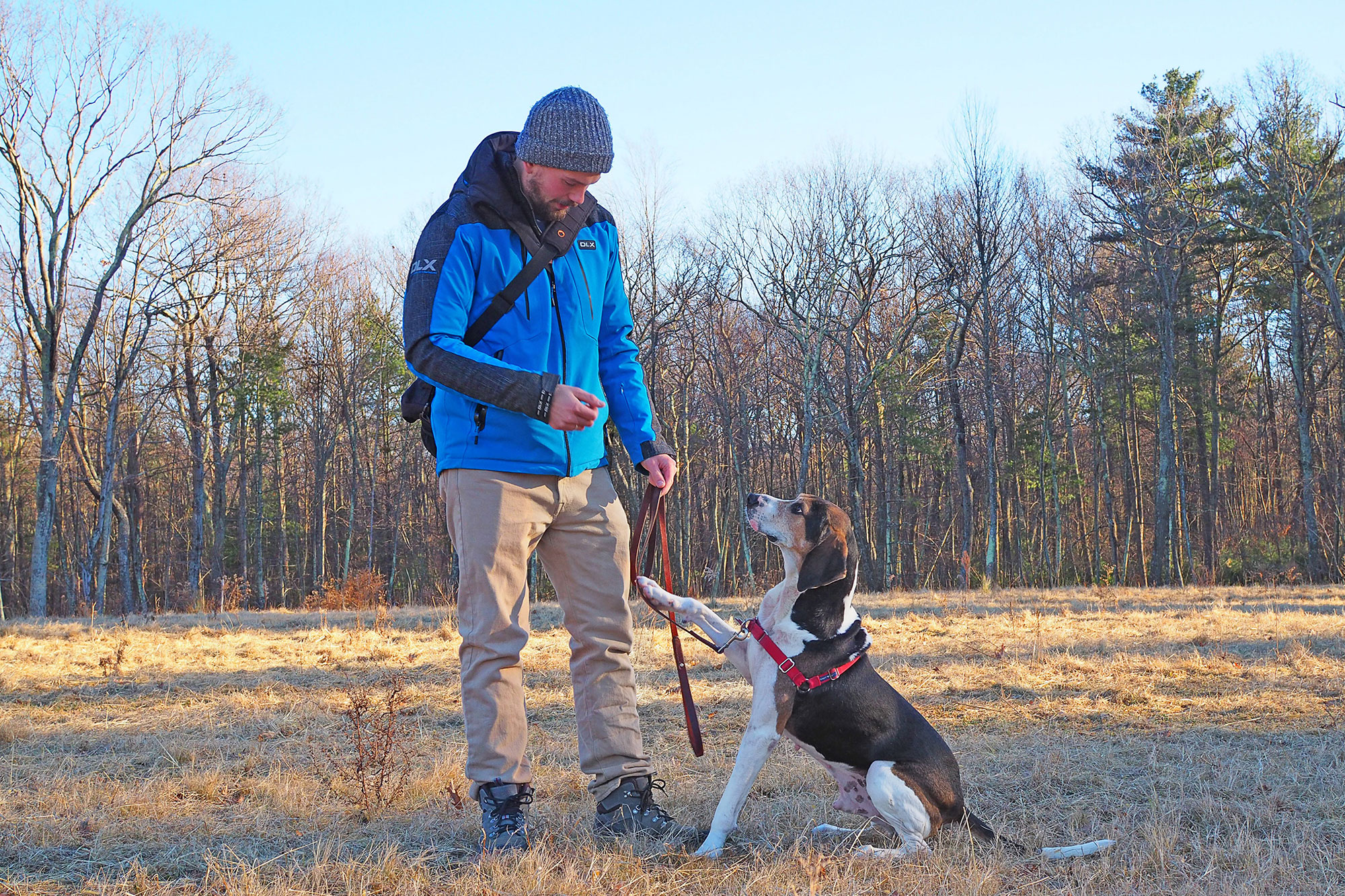Dog Training & Behavior
Baypath Humane Society supports science-based humane training methods that utilize redirection and positive reinforcement to shape desired behaviors in companion animals. Methods of rewards such as food, praise, petting, and play that are based on a mutual understanding, kindness, and respect between the pet and the guardian have proven to be successful in managing behavior. Baypath Humane Society opposes any methods, training tools, or aids that cause physical harm or discomfort to an animal.







Frequently Asked Questions

Training Basics
Can I fix my dogs problems in one session or with a training package?
It takes time and effort! The key to success in your relationship with your dog is YOU. Training will arm you with the tools to help address training or behavior challenges as well as suggest behavior modification techniques, but most issues will take some time to resolve. Dogs are constantly learning new things whether we are aware of it or not. Building and maintaining a relationship with your dog does not end in the classroom; it is a journey that you will share with your dog for the rest of your life together.
Thank you!
What does it mean to be 'alpha'?
This is a theory that has been debunked for some time now. Acting as ‘alpha’ means to force, stare, push, pull, and/or physically correct a dog to try to compel a behavior or to try to discourage one. These aversive methods are extremely confusing, scary, and potentially painful to the dog. The theory is dated and has no scientific basis whatsoever.
Should I use a prong or choke collar for dogs who yank or pull?
Some dog owners rely on prong and choke collars because they feel they cannot physically control their dog otherwise. There is a variety of collars and harnesses that work just as effectively as aversive collars, without causing discomfort, pain, or injury to the dog.
Is positive reinforcement/treat/reward-based training considered bribery?
Not at all! Treat/reward-based training is a very effective way to teach new behaviors and to strengthen your bond with the animal. Besides, once a behavior is learned, you can teach your pet to expect treats only occasionally.
Types of training
What is positive reinforcement training?
Positive Reinforcement means rewarding a desired outcome so that a behavior will occur again. Using positive reinforcement to train your dog means you reward the behaviors you like and ignore the behaviors you do not like. You can use treats, praise, or life rewards (such as games, walks, or car rides) to reward your dog’s good behavior. This is the most effective and humane path to a well-behaved pet.
What is operant conditioning?
Also called instrumental learning, Operant Conditioning is attributed to Edward Thorndike and B.F. Skinner. It is a learning process in which behavior is controlled by consequences. Operant Conditioning has the following four quadrants: Positive Reinforcement is the addition of something to increase the likelihood of a behavior, Negative Reinforcement is the removal of something to decrease the likelihood of a behavior, Positive Punishment is the addition of something to decrease the likelihood of a behavior, Negative Reinforcement is the removal of something to decrease the likelihood of a behavior.
What is clicker training?
Clicker training has gained popularity with the rise of positive reinforcement training. A clicker is a tool that makes a brief “click” sound and is used in training to communicate clearly to a dog that they’ve earned a food treat by performing a certain behavior correctly. This tool can help you in the beginning to practice positive reinforcement training more effectively and is then faded out over time as your dog learns, meaning you don’t have to rely on having your clicker (or treats) in hand for your dog to behave.
What is aversive training?
In dog behavior terminology an aversive experience (or simply “aversive”) is something unpleasant that is used to suppress or diminish an unwanted behavior. An aversive can be an unpleasant sound, a physical correction, the pain caused by an e-collar or prong collar correction, or a harsh scolding. It’s considered an aversive if it’s something your dog will work to avoid in the first place or will work to stop in the moment. The most common aversives used in dog training include physical corrections via prong or choke collars, shock or spray corrections from electric collars, alpha rolls and dominance downs, shaker cans, spray bottles, yelling, hitting, confrontational staring, or acting in a threatening manner towards the dog. Even something as small as a tap on the muzzle, holding your dog’s mouth closed, or poking your dog is an aversive if your dog finds it emotionally or physically unpleasant. They are simply inhumane. When considering which techniques or tools to use with your own dog, always ask yourself “Is this necessary?” More often than not there is a better way. If your dog trainer relies on aversives, they are ignoring the most recent advances in behavioral science. We do not support or recommend this method of training.
What is 'balanced' training?
This method utilizes a combination of positive reinforcement along with aversive methods.
Again, we do not support or recommend training techniques that use aversives.
What is LIMA?
LIMA stands for “Least Intrusive, Minimally Aversive.” It means that the trainer will strive to implement the “least intrusive, minimally aversive technique likely to succeed in achieving the training objective with minimal risk of producing adverse side effects” (Steven Lindsay, Handbook of Applied Dog Behavior and Training Vol 3). LIMA protocols are created to be the most humane. It is also associated with the lowest incidence of aggression, attention-seeking, and fear/anxiety in learners of all species.
Positive reinforcement training is Least Intrusive, Minimally Aversive training.


Finding a professional
How do I go about finding the right trainer for me and my dog?
Please see our page on Finding a Certified Trainer or Behaviorist for some recommended trainers, as well as some great resources on how to conduct your own search.
Are all ‘trainers’ considered equal?
Unfortunately, dog training is an unregulated industry and all certifications are not equal. Absolutely anyone can call themselves a dog trainer, make a website, print business cards, and take your money – qualified or not. Look for those with ‘CPDT’ or ‘CPDT-KA’ after their name. These trainers are certified by the Certification Council for Professional Dog Trainers. The CCPDT is a leading independent certifying organization for the dog training profession, and they require certificates to demonstrate mastery of humane, science-based dog training practices. Per their website, “Certified Professional Dog Trainer-Knowledge Assessed (CPDT-KA) measures a broad range of knowledge and skills in ethology, learning theory, dog training technique, and instruction.” To maintain their certification, a trainer must complete the required continuing education units, thereby making sure they’re up on the latest knowledge and techniques about humane training.
What is a ‘behaviorist’?
A board-certified behaviorist is a person who has completed a graduate degree (such as a masters or Ph.D.) in biological or behavioral science with an emphasis on animal behavior. A person who has obtained their Ph.D. would be referred to as Dr., but without a focus in animal behavior they would not be considered an animal behaviorist. An individual who has completed the necessary graduate coursework may apply to be a board certified behaviorist.
Additionally there are other programs and independent verifying organizations that can allow someone to designate themselves as a dog behaviorist. A great question to ask a behaviorist that you are working with is what coursework, hours, or examinations did they have to complete to obtain their credentials. Ask what organization they are certified through, if any, and research that organization to determine if the values are aligned with your own.
Please visit the American College of Veterinary Behaviorists if you are seeking a behaviorist for your dog.
